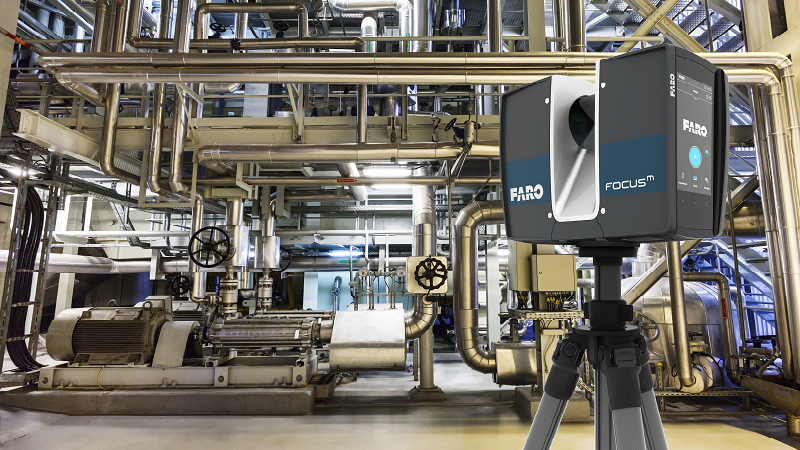
3D Laser Scanning
If you’re looking to decrease your labor expenses, improve material cost estimations and save time planning your next construction project, you may want to consider using 3D laser scanning technology. Laser scanning is the newest method for building information modeling (BIM), offering an accurate, cost-effective and highly integrative means of virtually modeling construction, retrofitting and restoration projects. This article takes a closer look at laser scanning technology, how it can be implemented in construction projects, and the costs and benefits associated with this innovative new method.
Contextualizing 3D Laser Scanning
Laser scanning technology is the most accurate method of building information modeling. A laser scanner captures the precise distance of densely-scanned points over a given object at rapid speed, in a process known as a point cloud survey or LIDAR (a combination of the words “light” and “radar”). Firms use a high-speed laser with an integrated camera that is mounted on a tripod. The laser emits light beams at a very high rate, and each time a light ray hits a surface in the environment, the system creates a data point that represents the distance between the laser scanner and that surface.
Laser scanners operate at a range of up to 300 meters in radius and can scan nearly a million distinct points per second. The typical error range for a laser scanner is plus or minus two millimeters for every 100m of distance between the scanner and the target surface, meaning that measurements that are not only fast but extremely accurate when conducted this way.
Laser scans are rapidly replacing traditional surveying methods that rely on physical measurement and mapping. These methods are effective, but may not be as accurate as laser scanners and take significantly more man-hours to be done effectively.
Practical Methods and Integration for 3D Laser Scanning
3D laser scanning belongs in the budget of any major construction project, and the leading firms are coming up with new and innovative ways to get the best results while limiting costs. In addition to the laser, camera, tripod set-up that is most common, firms are fitting laser scanners onto helicopters and drones to generate an even more accurate 3D mapping of large structures.
The most successful applications of 3D laser scanning up to now have been in the refurbishment and restoration areas of construction. When the job site is a National Heritage Building and you need to upgrade the HVAC and fire protection infrastructure, laser scanning is one of the best ways to map out the area and determine the best ways to accomplish the needed work without disrupting or damaging any other part of the building structure.
Laser scanning technology also integrates seamlessly with other software already in use by engineers and architects in planning construction projects. All the major providers of computer-aided design (CAD) and modeling software and BIM software have built compatibility add-ons that allow the point cloud data generated by laser scanners to be uploaded into the system, generating 3D images that are great for project planning or allowing architects to design building upgrades on top of an image of the existing structure.
Adopters of laser scanning technology show a retention rate of almost 100%, meaning that they’re likely never to go back to traditional survey methods for their BIM or CAD needs. Laser firms aren’t just focused on the construction business though – they’re using laser technology to help law enforcement build all-terrain exploratory robots that use thermal imaging to detect threats in their environment.
laser scanners could be used along with 3D printing to quickly manufacture and replace building parts or as a method of evaluating progress on a given construction project by comparing the desired end state to a point cloud map of the current progress.
Laser scanning technology solves a very simple and obvious problem that construction firms face every day – how do we accurately map our work sites to improve workflow, planning, and coordination? Previously, surveyors could give the lay of the land and architects were left to make scale-drawings or create their own images of the site.
Today, with laser scanning, we can quickly and easily produce highly accurate images of job sites and use them for planning, to anticipate our material needs, and to improve the efficiency and profitability of any construction project.
Key areas for application include:
- Creation up to date as-built documentation
- 3D semi-automated modeling
- Clash/Interference checking
- Condition and damage assessment
- Data exchange with many CAD platforms
- 2D plan
- Complete 3D CAD models from point cloud
- Aid in inspection
- Deformation analysis and weld peaking reports
- Tank/vessel volumetric information
Key Benefits of 3D Laser Scanning:
Speed, Accuracy, and Consistency
3D laser scanning enables a fast and accurate means of collecting millions of measurable data points in seconds to provide pinpoint accuracy, every time.
Valuable Data for Design
Datasets are dimensionally accurate, measurable, and shareable, so you can eliminate any guesswork back at the office.
Works on Retrofits and New Builds
For detailed MEP installations, you need a high level of accuracy. If your project is complex, involves retrofits, or requires refurbishment, you can capture precise data over the full measurement range.
- Mitigation of risk
- Minimizing shutdown periods
- Minimizing offshore fabrication activities
- Eliminate re-work and reduce the cost of retrospective engineering
- Reduction of installation man-hours
- Maximizing field productivity
- Minimizing field hot-work.

